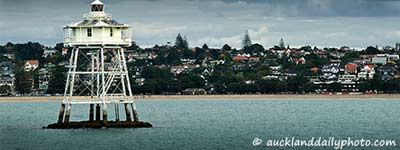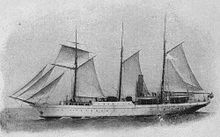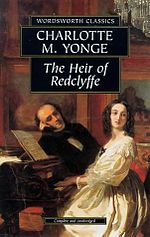Previous page
Next page
Index
copyright
All rights are reserved.
baker publishing. books, software, media.
Whether you think this is a work of fiction, or an accurate account of my life is largely up to you. I shall try to keep the facts accurate, but some of the memories I may have cannot be proven. In fact I did find myself in a huge amount of trouble with the New Zealand Police and the medical authorities when I allegedly claimed to either have the same DNA as Jesus Christ or to actually have been him in a previous life over 2000 years ago, when all I can recall is saying to a doctor who was a psyciatrist, that I had written the outline of the story of Christ from my perspective, and that written it in the first person, and submitted it to the publishers Penguin, but that it had been rejected.
I'm going to write more about this incident.
The trouble has continued, and is documented in an edition of my magazine The Crime and Punishment Journal. There are 365 editions plus one for the leap year, each published on one date of the calender, and each dealing with a crime or a punishment.
Grandpa
What I remember directly about my Grandfather is quite limited, although I know a lot more about him. He was Harry Burgess, father of Mary, my mother, Dorothy (Dot), Jessica (Jess), and Margery (Marge).
Mum, my sister and I visited Grandma and Grandpa had gone p to Auckland and were staying with Grandpa and Gran in their Kohi house. It is still there, part of the Anglican Church. It belonged to the Anglican Church since Grandpa worked for the Melonesian Mission. Their own house was a few hundred yards away across the church grounds, but perhaps they had sold it by then.My first memory is of getting up one night when we were staying with him and Gran. He died in 1957, and I was born in 1955, so I must have been between one and two years old, and I was walking.
Grandpa was up late, alone and he was painting some pictures of ships. He let me sit on his lap, and I was allowed to paint some of the funnels. I remember him saying "Buff" and I replied "bluff". Buff he said again, and I said "Bluff" again. "Allright it is bluff", he said. It wasn't too long before Gran came in and I had to go back to bed.
Grandpa, H.E. Burgess Harry) grew up 'before the mast' and was the Master of the Southern Cross V, a schooner which was contracted to the Melanesian Mission of the Anglican Church. These trips to take missionaries to the islands and to bring back student so attend school in Auckland.
He also took the Southern Cross up to China, Shanghai, I believe, although my Auntie Jess who died last year, (2010) has no doubt written about this and had much better memories and information than I do.
One thing which is not in doubt, because I have possession of it still, is that he returned from this trip with a Chinese Emperor's robe, which has recently been seen by members of the Shaolin Temple. Whether or not you believe it is THE Emperor's robe, because there have been many Emperors of China there can be no doubt judging from the workmanship and the Manderin words written on it alone, that it is not a copy or a fake.
It tells its own story to the literate (in Mandarin) but I have my own story about it.
(Story of the Emperor's new clothes.)
For some time the family lived in the Mission House on the Mission Bay beach. My memory of that time is quite clear even though I hadn't been born yet. Grandpa (I) decided to row a dinghy out to Bean Rock Lighthouse.

You can see the Mission House in the background of this picture I believe, right in the centre of the picture, virtually on the beach.
The plan was to row out and swim ashore, and next day swim out and row back. Being fairly fit, and probably in my early 40's because Mary was about 12 or so, and Harry was married at 35, I was confident. The swim back was fine, and I did it fairly easily, but next day I was a bit tired and was really starting to struggle toward the ennd, bt made it. The row back was no trouble.
Some time after that I decided that Mary should swim out. She started off well, but when we were almost there she was getting tired and really struggling and wanted to quit and get into the dinghy, but I wouldn't let her, insisting that she just keep going quietly. I'm not sure if she was close to drowning, because later on she was found to have an irregular heartbeat, however she made it.
When I was born she recognised me, in that she knew I had been her father, and possibly even recognised me from a previous life in which our relationship had been the same. She used to cause me some confusion as she sometimed said "Dad" when referring to Tim, and I didn't know whether she was talking about my dad or her dad.
Jess gave me a lovely photograph of that visit when I was 2, and Jennifer and I were playing with some golf clubs on the drive way, which I remember was covered with white shells. Grandpa even let me play on the drive with one of his model ships. Initially he said no, but Gran asked him and he said yes, but that I wasn't to break it. I promised I wouldn't but I did as it turned out.

This image doesn't tie in with the picture I have of the Southern Cross. The information also says it had auxillary steam power when in fact there is a possibility it was powered by an original Doxford (opposed piston) diesel engine.
http://en.wikipedia.org/wiki/Southern_Cross_%28ship%29
Southern Cross has been the name of a succession of ships serving the Melanesian Mission of the Anglican Church and the Church of the Province of Melanesia. She succeeded the Undine, a 21-ton schooner built at Auckland and in service from 1849 to 1857. Funds from Charlotte Mary Yonge's novel The Heir of Redclyffe (1854) were devoted to funding the construction of the Melanesian mission vessel.

The Heir of Redclyffe (1853) was the first of Charlotte M. Yonge's bestselling romantic novels. Its religious tone derives from the High Church background of her family and from her friendship with a leading figure in the Oxford Movement, John Keble, who closely supervised the writing of the book. The germ of its plot was suggested by her friend Marianne Dyson. According to J. B. Priestley The Heir of Redclyffe was "the most popular novel of the whole age…Its popularity left Dickens and Thackeray far behind." [1]
The first twenty-five years of the twentieth century of the Doxford marine heavy oil engine could broadly be called the Keller era. It was a period of success, consolidation and expansion. Karl Otto Keller was followed by his assistant William H. Purdie a marine engineer, and director but not a designer in the creative sense. Although it was acknowledged that the Doxford works and licensees were very busy producing engines, and Purdie was kept fully occupied. Keller was a supreme example of the creative engineer. In 1906, Doxfords began to consider the possibilities of the diesel motor for ship propulsion. They realised the solution lay in experiment and research and after a series of experimental engines was built and tested, emerged the single cylinder 450 HP engine. Not satisfied with the success achieved, they decided to experiment, with a 3,000 HP four cylinder single shaft set. These experiments had to be put on hold due to the outbreak of the First World War however during the next four years Doxfords built 21 destroyers and engined them with turbines each of 27,000 HP.